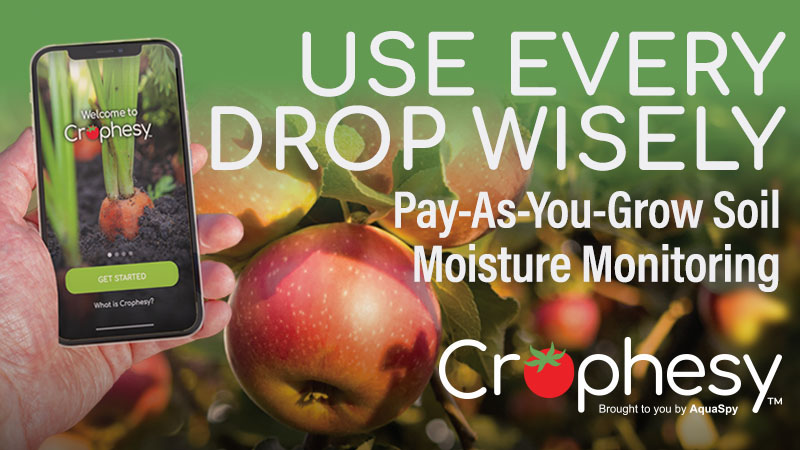Winter Injury Update On Peaches, Grapes, Cherries
Winter injury is more than expected for much of Eastern winegrape, cherries, and peaches, leading researchers say. However, the true extent of the damage varies from site to site. It’s also important to keep in mind that although bud damage might have been sustained, the full extent of the damage won’t be seen until bloom.
Grapes
Winegrape growers in Ohio are seeing 97% loses in vinifera varieties such as Chardonnay, Cabernet Franc, and Riesling, according to results of the state’s winegrape damage survey. Average losses of 57% are being seen in hybrid varieties such as Vidal Blanc, Chambourcin, and Traminette. Concord and Catawba, cold-hardy varieties, are reported to have 29% estimated loses.
“This is probably the worst grape damage on record in Ohio, even worse than the last bad one that took place in 1994,” says Imed Dami, an associate professor and Extension viticulturist with Ohio State University, in a news release on the survey. The survey was compiled from reports from 67 growers.
In the survey, Dami says the vines experienced a “deacclimation” with warm temperatures in the state during December; the proceeding extreme cold snap then shocked the vines.
“With bud damage more than 50% we recommend minimal pruning by hedging, leaving five bud spurs. With bud damage of 80-100%, vascular damage is likely and pruning can be delayed after budburst to assess trunk damage and possible die-back,” Dami says.
The Finger Lakes region of New York was recently declared a USDA disaster area, given the cold damage sustained in the region in December 2013.
“The northern portion of the Finger Lakes had colder temperatures than the south, so that’s where we tend to see more damage. The disaster declaration from USDA will give growers access to low interest loans through the FSA (spell out),” says Hans Walter-Peterson, viticulture Extension specialist with the Finger Lakes Grape Program at Cornell University. “Replanting assistance will be available through the Tree Assistance Program which was reauthorized in the recent Farm Bill.”
Walter-Peterson says, much like those in Ohio, the cold-hardy Concord and Catawba varieties are fine. Hybrid varieties have sustained some damage. The damage is location-based for vinifera varieties.
“There are some places that lost almost all of their primary and secondary buds. In those cases, we expect to see trunk damage as well, which would mean those vineyards need to retrain new trunks or replant those vines,” he says, adding that they won’t know the extent of the damage until this summer.
In an injury report sent to grape growers in the Finger Lakes region, Walter-Peterson and Michael Colizzi cautioned growers that bud damage doesn’t necessarily mean a reduction in the final crop. Growers will assess the extent of winter injury at bloom.
“Growers have held off pruning many of these varieties, especially more cold-sensitive vinifera cultivars, until they had a sense of how much injury there was in a given block. By doing so, they are able to make decisions about how to compensate for the amount of injury by retaining more buds on the vines, and therefore increasing the chance to have more live buds that will produce clusters,” they wrote.
Peaches And Cherries
A light crop of peaches is expected throughout the East, especially in Michigan, says Michigan State University Extension small fruit educator, Mark Longstroth. Damage is also being seen in sweet and tart cherry buds, he says. The extent varies depending on the site.
For peach growers, Bill Shane, a senior Michigan State University (MSU) Extension tree fruit specialist at the Southwestern Michigan Research and Extension Center in Benton Harbor, MI, suggests growers check trunks for damage and cambium browning.
“[Make] assessments of fruit bud mortality low and high in the tree to see where viable bud numbers may be scarce,” he says. “In general, do normal pruning, perhaps leaving more fruit wood where the crop is light. This is not the year to cut strongly on peach trees showing significant cinnamon-brown cambium discoloration as the trees need to recover from damage.”
Longstroth and Shane also recommend applying nitrogen in a split application. The first application should be made at bud break and the second once crop size is set, after bloom.
If there is a light crop, Longstroth cautions growers to not over-fertilize and create vegetative growth.
“If they don’t have a crop — cut back on fertilizer and prune the tree hard. I like to say, shorten the tree because if you don’t, the fruiting zone is going to move up 2 or 3 feet higher in the air,” says Longstroth.
As the growing season begins, Shane says growers need to find that delicate balance with irrigation,
“Growers should also pay careful attention to supplying water, as this is not the year to stress their trees with inadequate or too much water,” he says.
With a cooler spring, Longstroth suspects bloom is going to be delayed approximately 2 to 3 weeks. But, there is a silver lining to the delay.
“Because we’re late, we’re not going to be very far along when those freezes come, so we’re better able to handle freezes,” he says.










